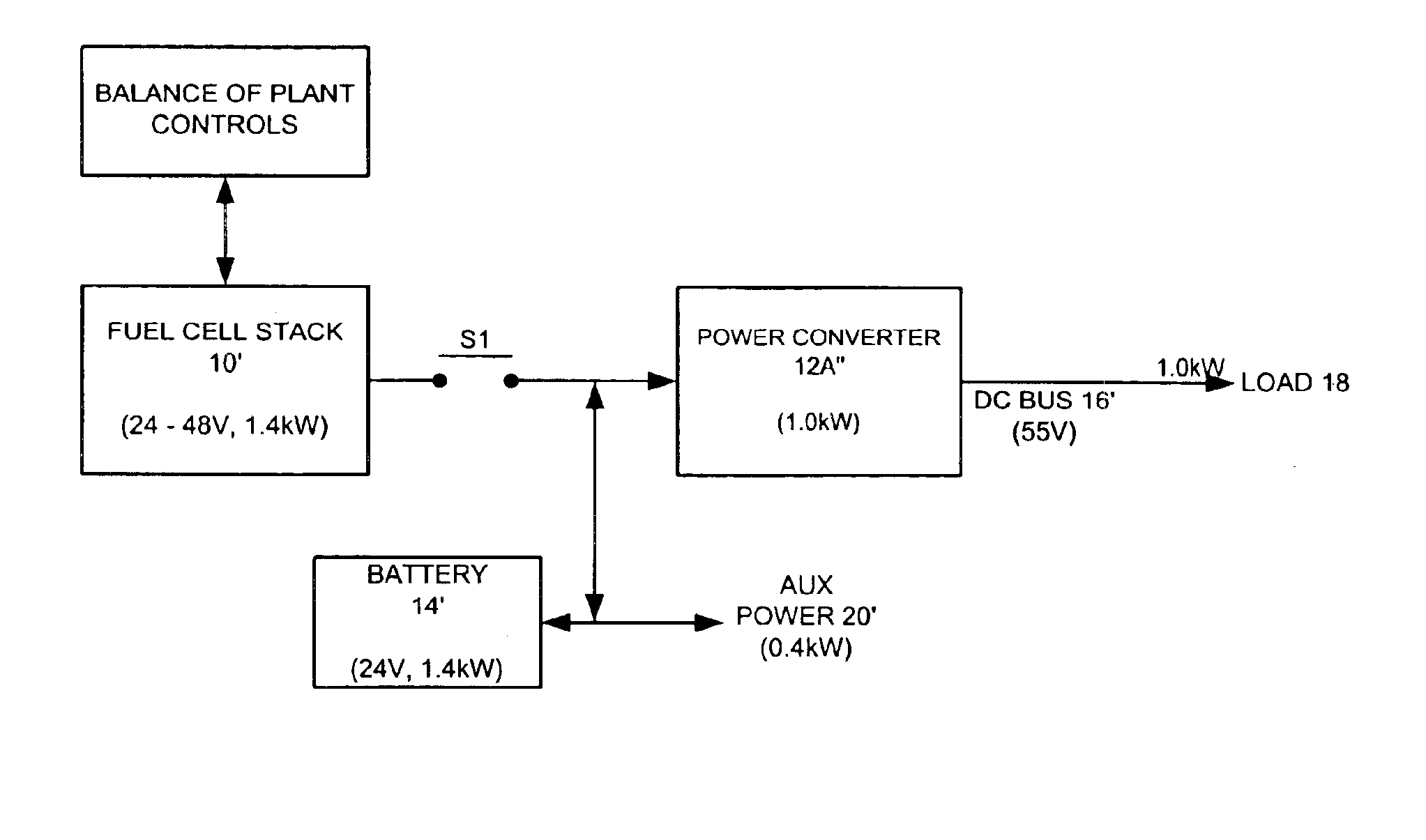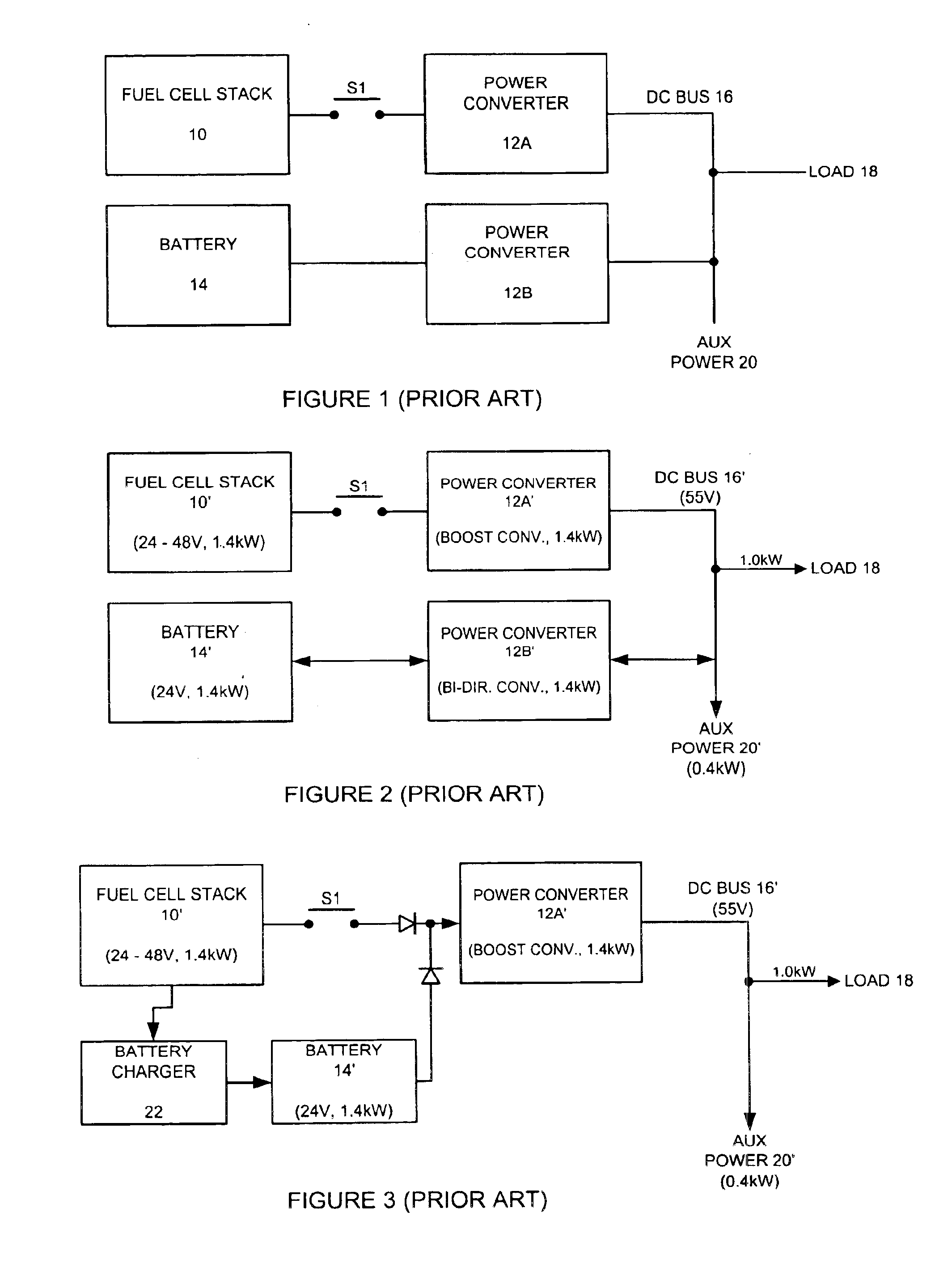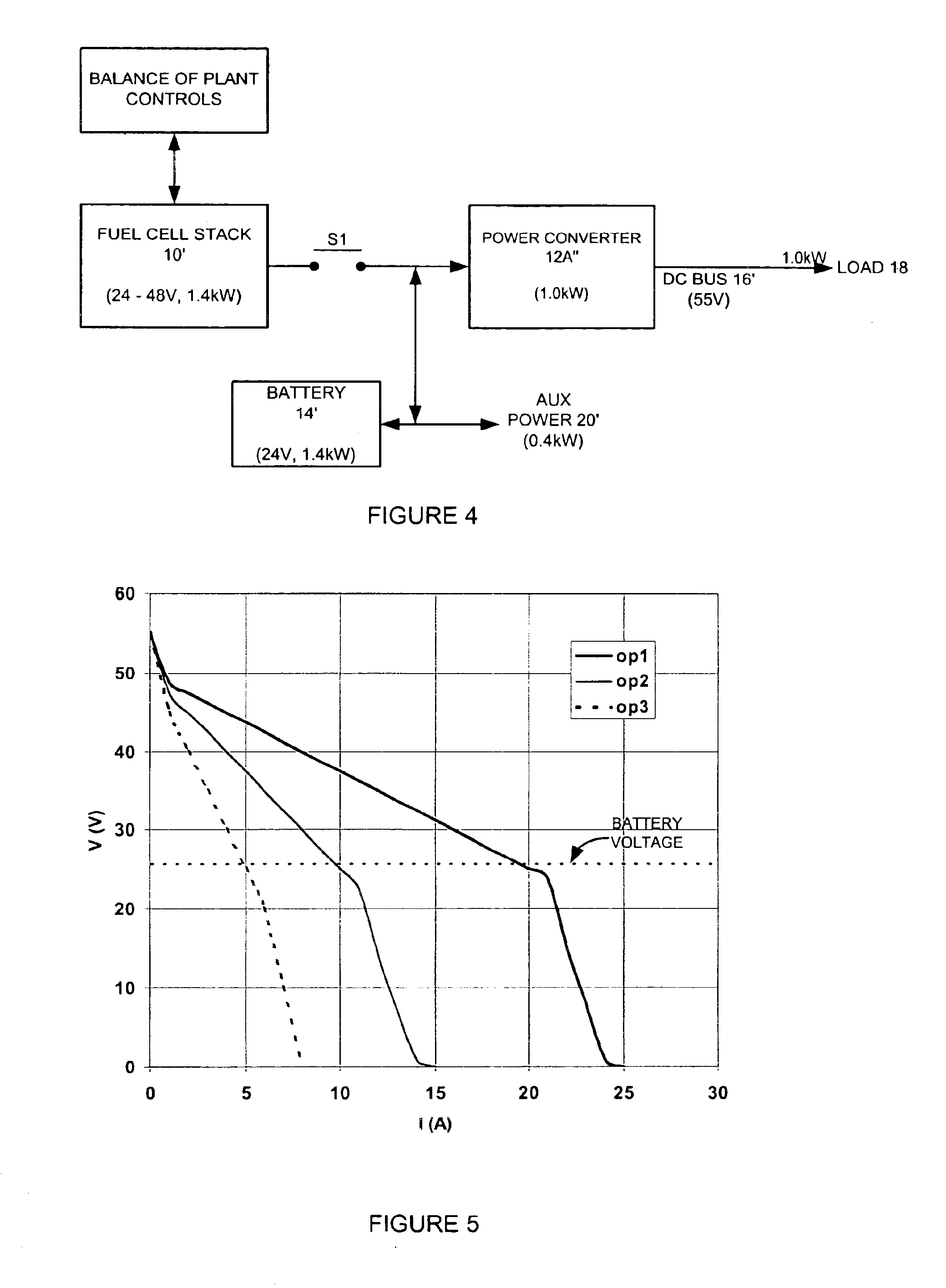Fuel cell system power control method and system
a fuel cell and power control technology, applied in the field of power generation, can solve problems such as shortened battery life, and achieve the effect of reducing the cost and size of the fuel cell power conditioning system
- Summary
- Abstract
- Description
- Claims
- Application Information
AI Technical Summary
Benefits of technology
Problems solved by technology
Method used
Image
Examples
Embodiment Construction
[0016]FIG. 4 depicts a presently preferred embodiment of the invention. In this embodiment, a fuel cell stack 10′ is placed directly in parallel with an energy storage device 14′ (e.g., a battery or capacitor) through a switch S1. The steady-state power flow from the fuel cell stack is controlled, using BOP controls (see BOP controller in FIG. 4), by adjusting the fuel cell operating conditions such as temperature, air flow, fuel flow, air pressure or fuel pressure. The transient power flow comes from the storage device 14′. For example, when the load 18′ suddenly increases, the energy storage device will provide power to meet the increase. The fuel cell operating conditions will then be adjusted to provide more power from the fuel cell stack 10′. As the fuel cell power increases, the output power from the energy storage device decreases. When the load 18 suddenly decreases, the fuel cell stack 10′ will be producing more power than required by the load. The extra power will flow int...
PUM
 Login to View More
Login to View More Abstract
Description
Claims
Application Information
 Login to View More
Login to View More - R&D
- Intellectual Property
- Life Sciences
- Materials
- Tech Scout
- Unparalleled Data Quality
- Higher Quality Content
- 60% Fewer Hallucinations
Browse by: Latest US Patents, China's latest patents, Technical Efficacy Thesaurus, Application Domain, Technology Topic, Popular Technical Reports.
© 2025 PatSnap. All rights reserved.Legal|Privacy policy|Modern Slavery Act Transparency Statement|Sitemap|About US| Contact US: help@patsnap.com



